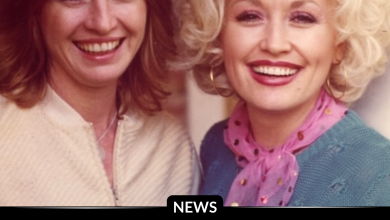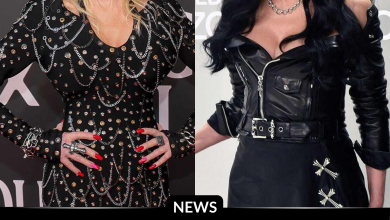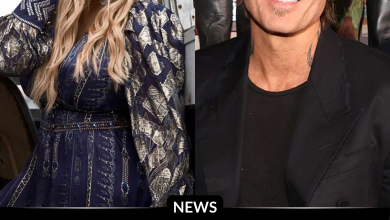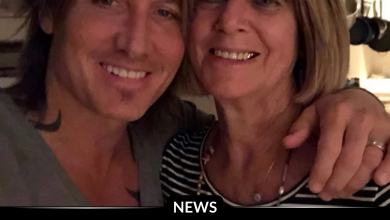How Clint Eastwood’s Silent Charisma Shaped Angelina Jolie’s Iconic ‘Wanted’ Performance
OPINION: This article may contain commentary which reflects the author's opinion.
Clint Eastwood is an actor whose stoic charm and iconic presence have defined decades of cinema. While his trademark toughness and grizzled demeanor have never been characterized by overt sensuality, his influence on the next generation of actors is undeniable. One such actor is Angelina Jolie, who, in her portrayal of the assassin Fox in Wanted (2008), drew inspiration from the legendary Eastwood. Despite Eastwood’s seemingly distant persona from that of a sleek, action-packed assassin, Jolie adapted his signature style of minimalism and quiet strength to her character, creating a performance that was both captivating and enigmatic.
A Unique Source of Inspiration
Jolie’s character in Wanted, based on Mark Millar’s comic book series, was initially quite different from the femme fatale we saw on screen. In the original material, Fox is portrayed with more traditional action-hero traits, but Jolie, known for her distinct approach to roles, wanted to bring something more subtle and nuanced to the part. She envisioned the character as “distant and unattainable,” a mysterious figure who communicated more through action than words—traits often associated with Clint Eastwood’s most iconic roles.
Eastwood, of course, is renowned for his portrayal of emotionally reserved, complex characters. From the grizzled Man with No Name in The Good, The Bad, and The Ugly to the tough-as-nails Dirty Harry Callahan, Eastwood’s characters rarely spoke in long monologues. Instead, they communicated with terse dialogue, powerful gestures, and piercing glares. Jolie sought to emulate this approach for Fox, deciding that the character’s sparse words would be outweighed by her steely presence and physical prowess.
Eastwood’s Influence: Minimalism Meets Action
Jolie’s portrayal of Fox channels Eastwood’s ability to convey depth without over-explaining. Fox’s dialogue is minimal, her actions speaking louder than any words she could say. Like Eastwood’s characters, she is a woman of few words, and even a simple raised eyebrow or a cold stare can convey volumes about her motivations. This approach, rooted in Eastwood’s own style, allowed Jolie to create a character who is enigmatic, powerful, and seemingly detached—qualities that mirrored the essence of Eastwood’s most memorable roles.
Her calm demeanor in action scenes, where she moves with calculated precision and composure, also draws from Eastwood’s knack for portraying characters who act with purpose and efficiency, rather than reckless abandon. Fox, like Eastwood’s heroes, does not revel in the violence she commits; instead, she remains detached, in control, and almost philosophically indifferent to the bloodshed around her.
Jolie and Eastwood’s Changeling: A Remarkable Contrast
What makes Jolie’s Eastwood-inspired performance in Wanted even more fascinating is that she immediately followed it up with a role in Changeling (2008), directed by Eastwood himself. In this film, Jolie portrayed Christine Collins, a mother searching for her missing son in a deeply emotional and gritty drama. The character couldn’t be further removed from Fox—one is a fierce, physically powerful assassin, the other a desperate, vulnerable mother. Despite the stark contrast in roles, Jolie’s ability to transition seamlessly from the action-heavy Wanted to the poignant Changeling speaks to her range as an actress, and it’s clear that both performances were shaped by strong directorial influences: one from Eastwood’s cinematic legacy and one from Eastwood as a director.
In Changeling, Jolie brought a similar sense of stoic resilience, though in a much more emotionally charged context. Her portrayal of Christine, like Fox, is restrained yet powerful, using minimalistic expression to convey the depth of her suffering and strength. The influence of Eastwood’s style—grizzled, internalized performances—can be seen in both roles, though they occupy opposite ends of the emotional spectrum.
Eastwood’s Legacy in Hollywood
Clint Eastwood’s unique style has left a lasting mark on Hollywood, particularly on actors who are looking to portray characters with a quiet strength. Jolie is far from the only actress who has cited Eastwood as an inspiration for tough, action-oriented roles. Carrie-Anne Moss, for example, has spoken about how Eastwood influenced her portrayal of Trinity in The Matrix (1999). The minimalistic style of performance—heavy on action and sparse in dialogue—has become a hallmark of many action heroines in modern cinema.
Despite Eastwood’s own reluctance to embrace blockbuster roles, his influence continues to permeate them. Actors like Jolie, Moss, and others in the action genre have taken his approach to character-building and made it their own, adding layers of complexity and silent intensity to their roles.
Conclusion: The Quiet Power of Clint Eastwood’s Influence
Angelina Jolie’s performance as Fox in Wanted is a testament to the enduring impact of Clint Eastwood’s cinematic style. By drawing inspiration from his grizzled, minimalistic characters, Jolie was able to craft a character who conveyed strength, mystery, and depth without relying on overt sensuality or dialogue. As Jolie moved from action to drama with Changeling, her ability to carry Eastwood’s influence into such different roles further solidified her versatility as an actress.
Eastwood may not be known for his sultry, sensual roles, but his brand of stoic charisma continues to inspire the next generation of actors, shaping how they approach both action-packed characters and deeply emotional performances.



